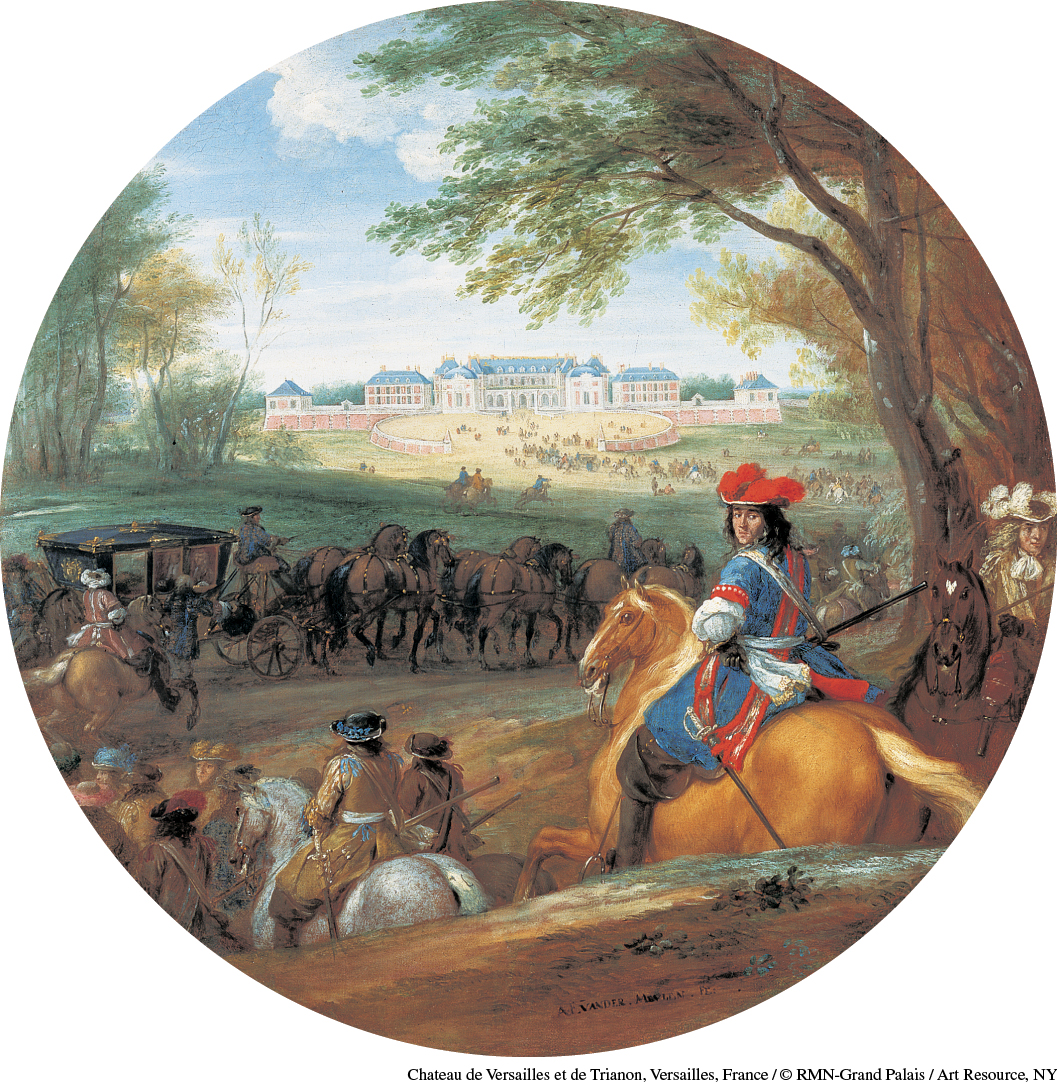Introduction for Chapter 16
Printed Page 504
Important Events
IN MAY 1664, KING LOUIS XIV of France organized the first of many spectacular entertainments for his court at Versailles, where he had recently begun construction of a magnificent new palace. More than six hundred members of his court attended the weeklong series of parades, races, ballets, plays, and fireworks. In the opening parade, Louis was accompanied by an eighteen-foot-high float in the form of a chariot dedicated to Apollo, Greek god of the sun and Louis’s personally chosen emblem. The king’s favorite writers and musicians presented works specially prepared for the occasion, and each evening ended with a candlelit banquet served by masked and costumed servants.
Louis XIV designed his pageants to awe those most dangerous to him, the leading nobles of his kingdom. To make his authority and glory concrete, the king relentlessly increased the power of his bureaucracy, expanded his army, and insisted on Catholic orthodoxy. This model of state building was known as absolutism, a system of government in which the ruler claims sole and uncontestable power. Other mid-seventeenth-century rulers followed Louis XIV’s example or explicitly rejected it, but they could not afford to ignore it.
Although absolutism exerted great influence beginning in the mid-1600s, it faced competition from constitutionalism, a system in which the ruler shares power with an assembly of elected representatives. Constitutionalism provided a strong foundation for state power in England, the Dutch Republic, and the British North American colonies, while absolutism dominated in central and eastern Europe. Constitutionalism triumphed in England, however, only after one king had been executed as a traitor and another had been deposed. The English conflicts over the nature of authority found their most enduring expression in the writings of Thomas Hobbes and John Locke, which laid the foundations of modern political science.
CHAPTER FOCUS What were the most important differences between absolutism and constitutionalism, and how did each system establish order?
The search for order took place not only in government and politics but also in intellectual, cultural, and social life. Artists sought means of glorifying power and expressing order and symmetry in new ways. As states consolidated their power, elites endeavored to distinguish themselves more clearly from the lower orders. Officials, clergy, and laypeople worked to reform the poor, now seen as a major source of disorder. Whether absolutist or constitutionalist, seventeenth-century states all aimed to extend control over their subjects’ lives.